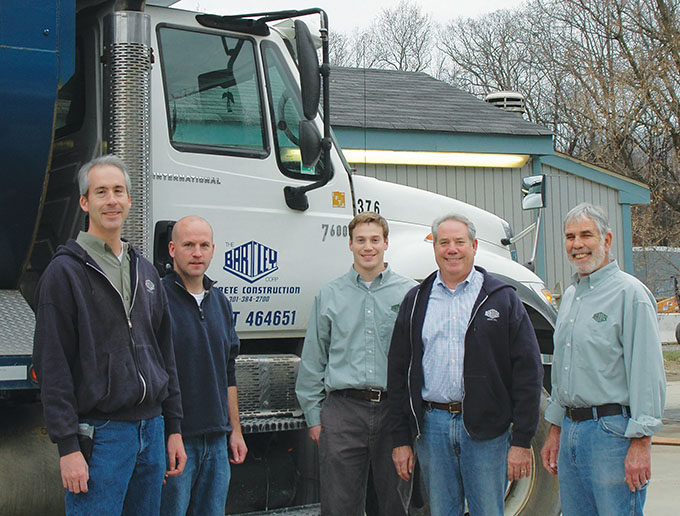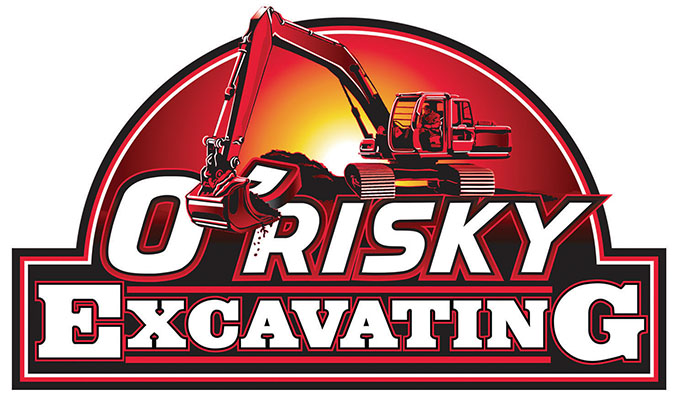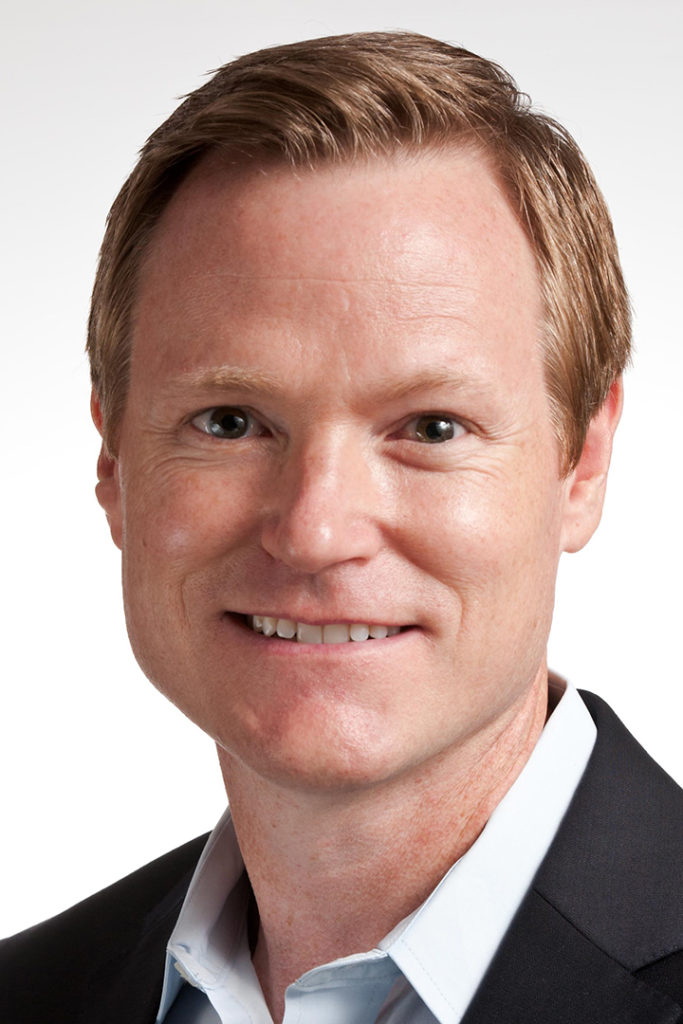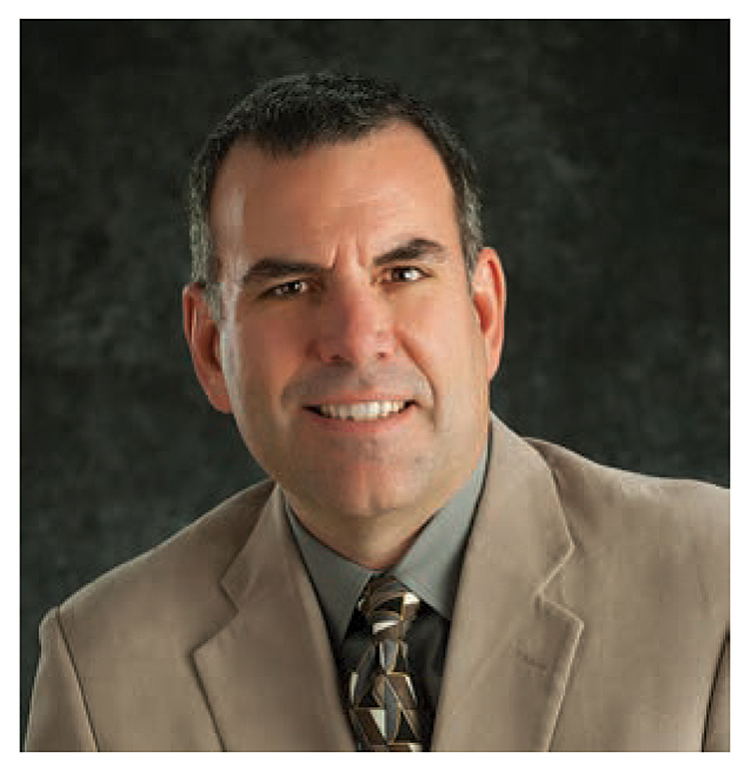Bartley Corp – 50 Years in Business

A founding member of the Concrete Foundations Association, two generations of Board presidents and now Legacy Committee members, a Certified Residential Foundation Company and a host of awards, Bartley Corp is a celebrated CFA member. It is their engagement and active involvement in this Association and all of the organizations they are committed to, sharing their business practices with other members and learning at the same time that demonstrates the leadership that helped establish what CFA is today. Here is info on their history.
2020 marked a significant anniversary for The Bartley Corp (Silver Spring, Maryland). They celebrated the 50th year of serving quality concrete to the Maryland market.
Buck addressed the company in a video sharing:
“50 year ago, this month June 2020, the Bartley Corporation began with a contract to build a small studio outbuilding for a friend in Garrett Park.
We had one employee, ME… a white Pontiac station wagon, wheelbarrow, pick & shovel, and my carpentry tools. That was it! And there we began!
Six months later we had $200,000 worth of business and two more employees, my dear brother Tom & my dear wife Marcia. And that is how we began!
Through the dedication & hard work of so many wonderful people, look where we are today. Over 150 employees & over $35 Million in business AND we have great people. We are surrounded by great people doing this work. And I am so proud of all of you!
I’m proud to say, this company was built on the core value of love & respect for all. And I am very proud to say that this same core value exists here today.
I know we are destined for more great things and more great achievements. So, my love and best wishes to all of you here today and my positive notion that this company will achieve much greater things in our future 50 years. Thank you “
In Bartley Corp’s 50th year, they celebrated by rolling out a comprehensive Vision and simplified Values. “We implemented part of our new Vision in our anniversary year by creating a training facility, the Bartley Academy. We now have a large training space which is yet another investment in the most important part of our company, our people,” said Jim Bartley, President.
Celebrating Membership Anniversaries
Every year during Concrete Foundations Convention, members are recognized for the membership milestones they have achieved. This year, with the event held in a virtual campus, the ceremonial Awards banquet was set-aside and the Projects of the Year competition held live during the week for viewing and voting. Milestone anniversaries are celebrated for just about every purpose in live and business and CFA membership is certainly worthy of such recognition. Presently, Perma-Structo and The Bartley Corp remain active from the original founding members and are celebrating their 46th year of membership. The list of companies arriving at any milestone of 5-years or more (every 5 years) is as follows:
40-Year Members
Groffdale Concrete Walls, Inc., New Holland, PA
Berggren Home Builders, Broken Bow, NE
35-Year Members
Custom Concrete Company, Inc., Westfield, IN
30-Year Members
MPW Construction Services, Wellington, OH
Latorre Concrete Construction Inc., Columbus, OH
Tremco Construction Products Group, Columbus, OH
Dilemme and Sons, Inc., Newburgh, NY
Ottawa Structural, Ottawa, ON Canada
25-Year Members
Schwing America, St Paul, MN
J. M. Pereira & Sons, Inc., Langhorne, PA
Putzmeister America, Inc., Sturtevant, WI
Abfalter Brothers Concrete, Elk River, MN
Concrete Poured Walls, Chesapeake, OH
Stachler Concrete Inc., St. Henry, OH
20-Year Members
K-Wall Poured Walls, LLC, Fletcher, NC
Atkins Brothers Concrete Walls, Inc., Beavercreek, OH
Nox-Crete, Inc., Omaha, NE
Coello & Associates, Inc., Waukesha, WI
PALFINGER North America, Niagara Falls, ON
Hudson Valley Concrete Pumping, Inc., Wallkill, NY
15-Year Members
Kelder LLC, Scottville, MI
Ekedal Concrete, Inc., Irvine, CA
Metro Foundation LLC, Corcoran, MN
Beran Concrete, Inc., Wichita, KS
10-Year Members
Progressive Poured Walls, Hinckley, OH
Thompson Concrete Foundations Ltd., Carroll, OH
Barrett Masonry Contracting Inc., Springfield, NE
Beaver Concrete Construction, Chambersburg, PA
SLS Financial Services, Kansas City, MO
Gravel Conveyors, Inc., Zionsville, IN
C & B Foundations, Bridgeport, CT
5-Year Members
Perry Masonry Inc, Mahopac, NY
Peachey’s Poured Walls Inc, Millcreek, PA
Verizon Connect, Atlanta, GA
Midwest Poured Walls, Gretna, NE
Knoerdel Foundation Specialists, Georgetown, PA
Seneca Foundations, Evans City, PA
Swilly Concrete, Elmhurst, IL
Congratulations on your organization’s significant achievement and thank you for the continued support and participation in what it means to be one of the #CFAConcretePros.
Congratulations…O’Risky Excavating Turns 25!

O’Risky Excavating has been a member of the Concrete Foundations Association since 2014. President and owner, Jeff O’Risky, now serves as a member (2018) of the Board of Directors and has been an active participant in networking within the Association since joining.
“Jeff has been one of those guys you just immediately feel energy from,” states James Baty, Executive Director for the Association. “He met us for the first time at World of Concrete and was looking for a colleague network he could learn from and contribute. Since then, he has been a strong participant in many of the more regular and convenient methods of networking through the Hotline and our in-person events. He has also been quick to jump into the convenience offered by the new digital in-person platform being used for Association events during this season of pandemic.”
One of the ways to get to know a company is through the eyes of the employees. “I’ve known Jeff personally for over 30+ years and worked for him only 3 ½ years but Jeff’s true passion for his company is very sincere,” states Leeanna Wassmer, office manager. “His drive and determination are contagious; it makes each of our team want to be a part of this success.”
The company continues to grow in many ways while focusing on the things they do extremely well and empowering others to come along and take control of the successful parts of their business that may not fit precisely within the vision Jeff has for the company. In today’s market and recent economic conditions contractors in and around the CFA realize that 25 years is a pretty big accomplishment.
No planned celebration is set at the current time, but as the pandemic context begins to shift more towards latitude, later in the summer is their goal for welcoming customers and others connected in business.
Joe Carr, Custom Concrete (1934-2021)

The Concrete Foundations Association owes considerable gratitude to Joe Carr of Custom Concrete (member since 1986) a true pioneer in this industry. His passing leaves both a hole in the spirit that established this Association and a legacy of leadership to continue building the future. “Joe had a very influential part in allowing me to begin managing the interests for the Association,” states Ed Sauter, former Executive Director. “Bob Sawyer passed the torch to Roger Nielsen and then Roger decided to enter retirement, it was Joe and Larry Clark (Concrete Facts 27-2) whom I recall having the most to say about who would next manage the Association.”
In a press release, Custom Concrete released the following:
Custom Concrete (Westfield, Indiana) celebrates the life of its founder, Joe Carr, who went to be with the Lord on Saturday, January 23. Not only did Joe’s leadership impact the thousands of employees, customers, and partners over the years, but he led far beyond the walls of Custom Concrete through being a leader to his family, in the community, and his church.
In 1969, Joe moved to Westfield, Indiana, where he and his wife (Betty Carr) began their home framing business, Custom Framing. Over the years, Custom Framing became Custom Concrete and has operated as a family business for over 51 years. What started as a man and his truck grew toan enterprise of over 400 employees.
“We at Custom Concrete are saddened for the Carr family and the passing of Joe. We know his legacy will live far beyond his time on earth. Joe built a company on a solid foundation and commitment to values that have been instrumental in creating the company standards. Our company will forever have his imprint,” Jason Ells, Senior Vice President.
Followed by his memorial service, the procession drove through the Custom Concrete facility as a memorial tribute. The company ‘shut-down’ for a few hours to allow all employees to come remember Joe Carr and show the family support as the motorcade arrived. The team honors Joe and how he built a company rooted in a foundation for quality: character, service, relationships, and values.
“I recall fondly just how much Joe Carr helped my company in the early days,” stated Barry Herbert, chairman of Herbert Construction Company of Marietta, Georgia (member since 1992). “He was one of the first we met who was always opent to talk with anybody, share experiences about anything and took a real interest in our company.”
“One of my first recollections of Joe Carr was his coining of the phrase, ‘the ready to wear basement’, a basement we might today describe as turnkey,” stated Ron Ward, CEO of Western Forms (member since 1985). “This basement concept had it all, fully waterproofed and ready for the builder to move in and build the house. Not many guys were doing this at the time and it really set a standard.”
A private family service was held on January 26 in Lebanon, Indiana. The family extends Joe’s wishes for any memorials to be directed to the Samaritan’s Purse:
Why Wait to Form Walls on Cold-Weather Footings?
by JAMES R. BATY II
As most contractors realize, it is quite normal for walls to still be formed on footings the next day (or two) during the colder months of December to March. While concrete does gain strength at a slower rate during this time of the year, the footing concrete placed with just 24 hours of strength gain can be shown as still more than substantial enough to handle the forming operation that takes place next. On Day 2, and then by the end of Day 3, forming and concrete placement does not bring a significant load over the area of contact (Baty 2016)1.
The Concrete Foundations Association (CFA) Cold Weather Research Report documents the work conducted from 2002-04 to establish significant evidence of the ability for concrete temperature to maintain maturity despite sub-freezing ambient air temperatures.
Forty-four different mixes and more than 800 cylinders along with more than 100 core samples from multiple full-scale walls demonstrate that maturity occurs more aggressively than ambient temperature predicts.

In figure 1, the strength gained for forty of the research mix designs based on a 30 deg F ambient air temperature condition is shown ranked based on the green segment representing 500 psi. ACI 3322 requires concrete to be kept above a frozen state until this strength is achieved. It is believed that this early strength level is both sufficient for the concrete to be self-supporting as well as the surfaces strong enough to resist the damage from any expansion due to ice lenses in the interstitial spaces. In just two days, most of these mix designs were well over 1,000 psi and some as great as over 2,000 psi with near design strength or more by the third day.
Keep in mind that the load of an 8-ft wall of concrete is 150 lb/cu ft x 8 ft x 8in./12in. = 800 lb/lin. ft. over the 8-in. thickness. Divide this by an area of 8 in. x 12 in. and you only have a load of 8.33 lb. per sq.in. on the footing. At the very lowest of 1-day strengths for a plain, 2,500 psi mix, you have a capacity 46 times that.

Figure 2 shows the rapid increase of strength ensured by hydration despite a below-freezing curing temperature. By the end of a third day, with this basic plain mix, you have over 2,000 psi. This approaches the required strength for the foundation wall itself to withstand the design backfill pressures when supported or connected properly.

Figure 3 demonstrates the principle of why concrete temperature is the true predictor of strength gain and how cold weather is overcome by it. Here a graph of the ambient temperature profile for a three-day stretch (dark blue) is compared to the measured temperature of the concrete at two key locations, top of wall and center of wall. While a footing is protected even further from the effects of heat loss by radiation, the top of wall condition can be a conservative application as shown here. Once a wall is cast on the footing, the footing curing condition is much closer to the center of wall condition. This is due to the placement of fresh concrete at a warmer delivery temperature to support further hydration and therefore maturity.
While colder air temperatures slow the maturity of concrete and prolonged freezing air temperatures can temporarily halt it, concrete footings will reach sufficient strength for the entire construction process making the forming process elementary provided proper mix designs are selected and manageable precautions employed. For more, visit www.cfaconcretepros.org/toolbox.
References:
“Why Wait to Form Walls on Footings?”, August 16, 2016 by Concrete Contractor magazine | www.forconstructionpros.com
Residential Code Requirements for Structural Concrete (ACI 332-20) and Commentary published by the American Concrete Institute, 38800 Country Club Drive, Farmington Hills, MI 48331 | Phone: 248-848-3700 | www.concrete.org
Getting Paid
Among the many advancements this Association has made for its members over the last decade, the growing affinity programs, those services and contract opportunities that bring you significant discounts or performance advantages, are among our greatest source of pride. One such program is that from C2C Resources, a global commercial collections agency. Established at the start of 2018, the relationship with C2C Resources has been offering CFA members a great partnership to maintain effective bill collections and protect against write-off losses. Today, that relationship has begun to pay dividends as members are beginning to find traction. – James Baty, CFA Executive Director

How we helped over 35,000 clients collect over 380 million dollars in bad debt

Sven Nelson
CMO – The Guy That Gets You Paid!
For as long as businesses extended credit to other businesses there have been those that couldn’t or wouldn’t live up to their financial obligations. By the same token, for as long as businesses have used credit to grow by taking on risky clients there has been bad debt and a need to collect it. Having over 15 years of experience in the collections industry, I know how stressful and debilitating uncollected debt can be on a business and those managing it. The reality is that a lot of unpaid accounts are simply the result of a business struggling.
The good news – there are multiple paths that a business can decide to take if they have accounts that still need settling.

A lot of companies will first opt to try and collect these unpaid accounts in house. Many of them have full fledge collections teams of their own but most struggle with the time and resources to do the job as effectively as we can in many cases. Regardless there is only so much you can do in house. You can only write so many letters, make so many phone calls and have so many conversations before you are quickly duplicating your own efforts expecting different results. I believe that is the definition of insanity. You would not believe how many accounts get sent over to me that have had multiple “Final Demand letters “sent on the same account. As if getting one more letter with “past due “stamped on it is going to make a difference with someone that has already thumbed their nose at you many times over. While in-house debt collection is important, the true strengths of in-house work lie more on the proactivity side then the reactivity side. Focusing your in-house efforts on bad accounts means your spending less time analyzing your other clients, and you could miss the signs of another client being a bad risk. Ultimately, I usually see this type of work exacerbating a client’s problems, rather than solving them.
Another solution that I get asked about often by clients is whether hiring a lawyer to help collect unpaid accounts is as effective as an agency such as ours. The answer, like many nuanced things in life, is that it depends.
The truth is that our Justice system is not set up to collect money, it is set up to dispense justice, many people get this confused. They think that once they get a judgement that they will quickly be rewarded with a pile of cash or a check coming from their debtor. Unfortunately, this could not be further from the truth. Once you’ve got the judgement, you still must find assets and attach them which is another feat in it of itself. Because of this we only resort to taking a debtor to court in less than 2% of our cases. Legal headaches work both ways and, in some cases, you can be opening yourself up to a frivolous counter suit that could cost you money to defend it. Once a suit is filed the plaintiff can file a counter claim for free, regardless of it’s merit. Keep that in mind when thinking about going to court. You may end up spending a lot of unnecessary time and money tying your account up in the (putting it nicely here) less-than-efficient legal system, perhaps even more than the account is worth, by the time you factor in all that is lost.

I understand that for many, going through the collections process can be just as confusing as going to court. That is why we have assembled a team of experienced people to guide you through the process, equipped with the proven tools, resources, and strategies that have led to us collecting well over a quarter of a billion dollars in bad debt. People that care about your business and the dollars that are at stake.
First, we realize that most accounts are not the white whale – not some giant multi-million-dollar unpaid debt that needs collecting. Many of the accounts that we collect are smaller balance accounts that range in size from $200.00 to $10,000.00 and everywhere in between. That is not to say that we aren’t equipped to handle large accounts, but that we work for everyone. We have hundreds if not thousands of high five, six-figure and seven-figure accounts that we have collected over the years, with many more medium and small accounts on top. We created a tiered system of collectors separated by the size of the account. We have collectors working on small, medium, large, and super large accounts. This ensures that each and every one of our accounts gets worked evenly, no matter how large or small.
Second, we use a drop-down system to ensure that every account gets worked by 2 sometimes even 3 in house collectors on our staff to ensure that nothing was missed by the previous collectors. Then it goes to a finals collector that makes one last attempt. This ensures that we have multiple sets of eyes on our accounts in a 4-to-6-month timeframe and that we are making every effort to collect for our clients before taking any further action. We use the latest and most advanced skip tracing resources – the same software used by law enforcement agencies – to help us track down alternate forms of communication that our clients may not have access to or in some cases may not have provided.

Third, we created our own custom software to track and communicate proficiently with our sales and collections team in house making us a well-oiled machine. In addition, our cloud-based software doubles as an inhouse collections tool for our clients (Profit Maximizer) to use for free that provides reporting systems, scripts and rebuttals for collections, in addition to professionally written collections letters that can all be sent out via fax, email or snail mail. All of this was created to help our clients reduce the need for a third party and mitigate bad debt. This system also allows our clients access to their invoices and remittance statement too.
Most importantly: our people. Our people are passionate about their careers and care about the results, not only for their own monetary benefit, but for the greater good of our clients and the companies we serve. We have a diverse team some with industry specific expertise and knowledge and know-how to satisfy specific clients’ needs. Our average collector has over 30 years of experience in this field, and we make sure that we are constantly bringing in new faces to learn under our experts.

On top of all of that, we strive to create lasting beneficial relationships with our clients. Nothing makes me prouder of the work we’ve done than when I get to call a client and tell them that I just collected in full their eight- or nine-month-old receivable that they just placed with me that morning and that I’ve already got the money in our account. But I also enjoy just as much a call from a client, I’ve had for ten or more years, calling simply to ask me how my children are doing, or what my plans are for the weekend; and I do the same all the time. These are the kind of relationships that foster success, and these are the kind of relationships we forge.
Five Areas of Focus

Doug Herbert
Herbert Construction Company
doug@herbertconstruction.com
The Board of Directors of the Concrete Foundations Association (CFA) got together late last year to determine the direction of the association for the next several years.
The strategic planning meeting spanned three days and covered issues regarding the foundation industry. Our goal for the meeting was to determine how to improve our members’ businesses, provide more value to our members, and grow our association.
We determined that we will focus on five areas:
- Workforce / Talent Development
- Peer Networking / Community
- Membership
- Education
- Advocacy
We have assembled teams of CFA members for each of these five areas of focus. Each team, or task force, will meet virtually over a set period of time and discuss ways we can help our members in that specific area.
The end result is that each task force will have created deliverables that will help our members improve their businesses.
And here’s how you can benefit from this…
We are still accepting participants to join those groups, and we’d like to see you in one. You can join the discussion and help the task force achieve its goals. You will be working with other CFA members to discuss the issues and find the best solutions for moving forward.
But the real benefit that you’ll get out of joining a task force is in talking with other concrete contractors.
Having served on these types of groups in the past, I know one thing is certain:
If you join one, you’ll get more out of it than what you put into it. The ideas you receive and the friendships you make will pay off in many ways.
Four ways you’ll benefit from your involvement:
- You’ll hear what other contractors are doing in their businesses, and get ideas for your own.
- You’ll develop friendships with other contractors that you can call to chat about business issues.
- You’ll learn ways to improve your company while helping others improve theirs.
- You’ll help the CFA create better services for our members and grow the association.
If this is something you want to be a part of, then please email Jim Baty at JBaty@cfaconcretepros.org.
This is a great opportunity to get involved in the CFA and work alongside a terrific group of contractors.

Amazing Leaders…Amazing Minds!

jbaty@cfaconcretepros.org
This past October, the Board of Directors completed a three-day Strategic Planning event. The first such effort since 2012, our collective energies were still focused on the same general sense of goals and strategies, though constantly adapting to fit the needs of the membership and the industry. In nearly a decade that plan had been pushed and pulled, rolled over and marked up so many times that even as close as I am to it, I couldn’t clearly interpret the tea leaves. It was time
In 2012, the Board gathered in a large conference room. Large Post-It notepads were placed around the room and the mud slinging began. I still have those paper images and it seems the wholeness of the strategy was to define and refine who the CFA could be for the future. Considering this Association was established in 1974 by contractors, for contractors, it isn’t hard to imagine the need to stay true to that mission. Today, even more so than just a short decade ago, the networking landscape is vastly different. Information seemingly at your fingertips…Google has proven that you can get a purported answer to any question from any position. Essentially, today’s knowledge base is about bending information to your will… support what you want to be supported.
This past October, I watched a refreshing group of industry leaders, taking valuable time from their businesses, investing in a new vision. There was no discussion of “new identify,” the Concrete Foundations Association doesn’t need that. Five pillars, platforms, areas of interest…these came from the hard work of discussing the past and present and evaluating the opportunities of the future. The Strategic Plan established a core vision for the Association to center energy on strengthening Education, Networking and Advocacy while building new strategies to leverage Membership and Workforce Development. These five aspects of what the Association needs to be for the members become your core values. The Board then installed task forces for each and invited the membership at large to participate.
January rolled in after the holiday season and without World of Concrete to plan around, an intensive four weeks of development work took place by incredibly talented and spirited members. Whether on the Board or serving as a member-volunteer, they took task development to a new level. Eighteen goals for the Association are now prepared for the Board to wrestle with in their February meeting. This represents the structure of the here and now as well as the short to long-term development planned to continue building on the legacy that every Board before had maintained.
I extend my personal thanks with sincere gratitude for the amount of effort put forward that continues to make this association a special place. A place where dedicated and passionate businesses can come together, be supported, contribute and strive for the strongest of futures for our industry, its workforce and their families. The introductions to your new Board members found beginning on page 18 evidence much of this energy and the excitement we should all have for what is to come.

Bartley Corp in Middle Tennessee is Open for Business
Silver Spring, MD (February 3, 2021)
Bartley Corp in Middle Tennessee is Open for Business
The Bartley Corporation announces the opening of a new location that will provide concrete construction based in Springfield Tennessee. Aiming to meet the increasing demand for qualified contractors in Nashville’s booming housing market, the company has established a new team under the leadership of Tom Bartley Jr. and Nery Zabaleta. A local of the Nashville area for 20 years, Tom Bartley Jr. is excited to lead a new team built from 51 years of experience and systems in which his uncle Buck and father Tom built.

“This growth to a new market has been a joy because we have been able to improve our systems and training for our teams in Maryland, while being able to make sure our content applies to Tennessee; or really anywhere,” states Andy Bartley, Vice President. “The unique draw to the Nashville area is a winning combination of having a trusted and established leader in my brother Tom and the booming construction that is taking place in Middle Tennessee. We continue to lean on relationships made from the CFA which has helped make this possible”
The Bartley Corp has been a leader in Concrete Construction since 1970 and continues to be a family owned and operated business. Bartley Corp is based in Silver Spring, Maryland and employs over 160. Bartley Corporation’s construction services include Residential Concrete Foundations, Excavation, Waterproofing, and Commercial Concrete Construction.
Mission Statement: Bartley Corp is a partnership of families with a relentless mission to optimize the foundation construction process; strengthening the world around us. Through safe and rewarding careers, our team members passionately craft and mold liquid rock; the miracle of concrete!
For more information, visit https://bartleycorp.com/about/contact-bartley/middle-tennessee-concrete-foundation-construction/
Media Contact: Andy Bartley
Bartley Corporation
P.O. Box 1299
Ashton, MD 20861
Phone 301-384-2700
info@bartleycorp.com
www.bartleycorp.com
Taking Control of Your Post-Injury Healthcare
by Levi Schrock, Custom Concrete
Though COVID-19 has slowed customer traffic for many companies across America, most construction businesses and medical facilities are as busy as ever. For these construction companies, employees will always face some level of physical risk when on the job — and being pushed to extra fast-paced production usually results in a higher volume of workplace injuries. Simultaneously, hospitals and emergency medical facilities are dealing with full schedules and long wait times while trying to adapt to the COVID-19 restrictions that various states and cities are changing on an almost-monthly basis. This ruthless busyness in two large, symbiotic industries will likely end up causing contractors increased indirect costs for their injured employees’ medical care.
Even pre-COVID-19 there were many reasons for employers to take as much control as possible when it comes to claim management and medical care for injured workers. While we all want injured workers to be cared for and healed in the simplest and quickest manner, medical facilities and insurance companies are often less incentivized than employers to make this happen at low costs. In fact, the businesses of hospitals and insurance companies often benefit from these incidents. Hospitals get paid for providing medical care, and insurance companies can almost always raise premiums for poor loss experience. Employers, on the other hand, are saddled with paying increased medical costs, increased premiums, employee wages, and the opportunity costs for every day of slowed or paused production due to the injured employee being in reduced capacity. Simply put, no one (except perhaps the employee) will care as much about injury recovery as the employer.

A triage nurse hotline is a very interesting way for the employer to get more post-injury control. While many people think that this benefit is only viable for larger companies, the truth is that a nurse line may be cheaper and more customizable than previously imagined. There are many companies that provide this service, but it is important to consider the philosophy and practical implementation of the two main triage styles before getting caught up in specific company brands.
Mass-Network Group
The first and more widely known setup for a triage nurse hotline is the mass-network group. Consider the following pros and cons related to the wide variety of services a mass-network group can provide:
Pros:
- 24/7 Availability: By having dozens or even hundreds of nurses sitting around computer screens, there will always be someone available to take your call. You usually reach a nurse in a matter of minutes, and this prompt response time can make all the difference quickly learning what care is needed.
- Multiple Languages: Most any injured employee, regardless of what language they speak, can relay injury information to the nurse. This is not always guaranteed at medical facilities.
- Excellent Record-Keeping: Large triage companies record everything, from injury treatment instructions to the calls themselves. If you need any information about the call, it will not be difficult to obtain.
- Third Party: These companies do not have any stake in your specific safety rules or employee relationships. When employees call in, the nurses will always advise medical care to the best of their abilities.
Cons:
- Expensive: Cost plans can vary with each company, but there is usually an annual base fee (that covers a guaranteed number of calls) with a per-call fee for every additional call. A plan like this could be expensive and therefore requires calculating the numbers very carefully.
- Different Nurses: If you call for a nurse on two different days in the same week, you will almost certainly get two different nurses. In fact, you will probably never talk to the same nurse twice. This constant change makes it difficult to build a relationship with the nurse and therefore makes it difficult to build trust.
- Registered, Not Necessarily Experienced: What does “registered” mean? Make sure you understand the answer well. If you are expecting the most seasoned soft-tissue injury specialist, you will probably be disappointed. Unfortunately, some of these nurses respond according to the on-screen prompts more than by using their education or experience.
- Third Party: Yes, this pro is also a con. These nurses are unlikely to have any interest in your specific business, which means they probably will not have any experience or understanding of your business. An employee who tells a nurse that he or she fell off an eight-foot panel into an overdig may be in for a long explanation.
- It’s Just a Call: Doctors diagnose patients by examining them in person because it is very difficult to prescribe the best treatment from a mere phone call. No matter how long the phone call is, there is a limit to how effective the diagnosis can be when the information is relayed only through words.
- Conservative: If these nurses misunderstand the gravity of an injury and prescribe less than adequate treatment, they could lose their credibility (and possibly lose a lawsuit). So, even if stitches are unnecessary, they will probably recommend stitches if they would help. Likewise, for most every fall from five feet or higher, they will likely recommend the injured employee sees a doctor due to potential head trauma.
Company-Provided On-Call Nurse
The second triage nurse hotline setup to consider is hiring a dedicated on-call nurse. This is a part-time employee you would hire to work for you on-call (whether through in-house payroll or as a subcontractor is your decision). As with the other style, there are both pros and cons to this approach:
Pros:
- Inexpensive: You set the pay at whatever amount you and your nurse agree to. Many once-nurses who are now stay-at-home moms will gladly make time for a 15-minute phone call for $30-$50.
- Consistent: When you get the same nurse every time, employees will start to grow trust in the system. This is especially beneficial for cases where follow-up calls are warranted.
- Experienced: This can be a pro if you choose your nurse wisely. For example, if most of your injuries are strains and sprains, you might want to seek out someone with experience in orthopedics.
- Industry Savvy: Even if your new nurse has never worked in construction, you can invest time and training into bringing him or her up to speed. Your employees will be impressed and more confident in your nurse’s recommendation if he or she knows what pins and wedges are, and you will be happy when the diagnosis is more accurate.
- Flexible: Maybe texting some photos of the injury would help clarify the description of the injury. If using FaceTime would make remote diagnosis easier, you could do that. You are not confined to call conversations only.
- Unbiased: This nurse should always give recommendations according to what is needed, and when there is mutual trust with the employer, the recommendations can be honest (and not just conservative for the sake of being overly safe).
Cons:
- It’s Up to You: While the pros of a privately employed nurse are essentially the reverse of the cons of using a mass-network group nurse triage, the cons of a hired nurse are largely up to the employer. For example, excellent record-keeping and 24/7 availability need to be negotiated up front (and you have to be willing to pay more for those services). However, most construction companies do not need these kinds of benefits, especially not all the time. You may be satisfied with a nurse who is only on call during your normal working hours. These logistics will be up to you.
During the current pandemic, the challenges your workforce faces when dealing with medical clinics have become even more arduous and time-consuming. On top of this, you still have to navigate workers compensation, post-injury care, claim management, liability, and all the other complex issues that come hand-in-hand with using triage nurse hotlines. While not comprehensive, this article is meant to give employers a better understanding of how to control more of the post-care process for injuries in an economy where post-care is less predictable than usual. If you have any questions regarding the potential of using a triage nurse hotline and how your company might benefit, do not hesitate to give the Concrete Foundations Association a visit (www.cfaconcretepros.org) or a call (319-895-6940), and get connected with members who use mass-network groups and members who have opted to hire a private on-call nurse.
Levi Schrock has been a featured speaker at Concrete Foundations Convention and is a regular participant in the community forums (formerly the CFA Hotline) found at www.cfaconcretepros.org. Schrock is the author of “Safety for a Residential Concrete Company,” available online on Amazon ($10). You can find more information by contacting Schrock or association staff through your member account.








